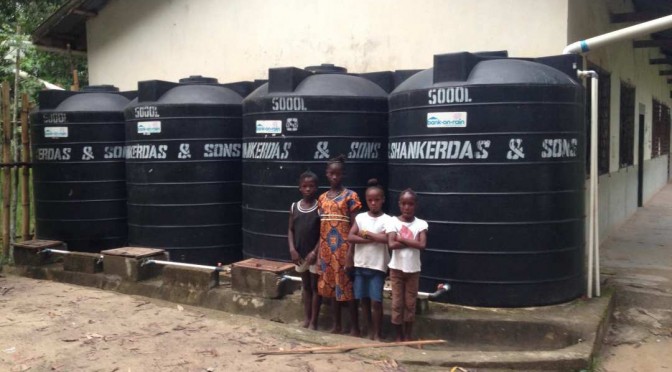Rainwater harvesting is the collection of rainwater for reuse in the domestic, agricultural or industrial sectors rather than letting it runoff and be wasted.
Rainwater harvesting has been around since the third century BC where it was used for irrigation in Tamil Nadu (India) but it has great potential within the African continent.
 |
| Rainwater harvesting in Africa (Source) |
In a continent of highly variable rainfall and frequent droughts leading low productivity and food insecurity rainwater harvesting is a way of storing water during times of rainfall that can then be used when there is none. It is particularly useful for rainfed systems which are dependent on the natural variability of rainfall (Karpouzoglu and Barron 2014). Having this water available is a solution to food security and makes water use and crop production more productive and efficient (Dile et al 2013; Mwenge and Taigbenu 2011; Karpouzoglu and Barron 2014). Furthermore, rainfall patterns are the main factor effecting crop production in Africa (Muller et al. 2011) and with climate change creating extreme droughts and shorter wet seasons rainwater harvesting is seen as a major form of adaptation against climate change (Lebel et al. 2015).
However, as Getnet and Macalister (2012) note (as does Mwenge and Taigbenu 2011)the research and focus of rainwater harvesting has mainly been on domestic use such as Ward et al's (2012) study into rainwater harvesting in an office block. Rainwater harvesting may be low cost and simple technology but it requires high labour input to set up (Van Heerden et al. 2005). In poor rural communities they must rely on local (hopefully free) labour otherwise this low cost endeavour would be undermined if labour costs exceeded the cost of buying it.
Rainwater harvesting, like drip irrigation, is incredibly useful in the African continent - especially within agriculture because it is low cost but unlike drip irrigation it is easy to maintain and useful for all portions of society (as it can be used domestically as well). Used in conjunction with drip irrigation it could boost crop productivity in Africa.
Hi Max! A very informative post. I agree that rainwater harvesting could be an especially useful adaptation given the reduced frequency of low- and medium- intensity rainfall events projected with climate change. However so you think that this is not so much a solution in itself, but something that should be implemented alongside other solutions, e.g. drip irrigation? And if so, what combination of solutions do you think would be most effective?
ReplyDeleteSorry - *DO you think that is not so much a solution in itself...
DeleteThank you for your comment! Yes I think this should be used in conjunction with other solutions. It solves problems associated with water shortages but not poor use by farmers or inefficient environmental factors (e.g. excessive evapotranspiration). It would work well with drip irrigation
Delete